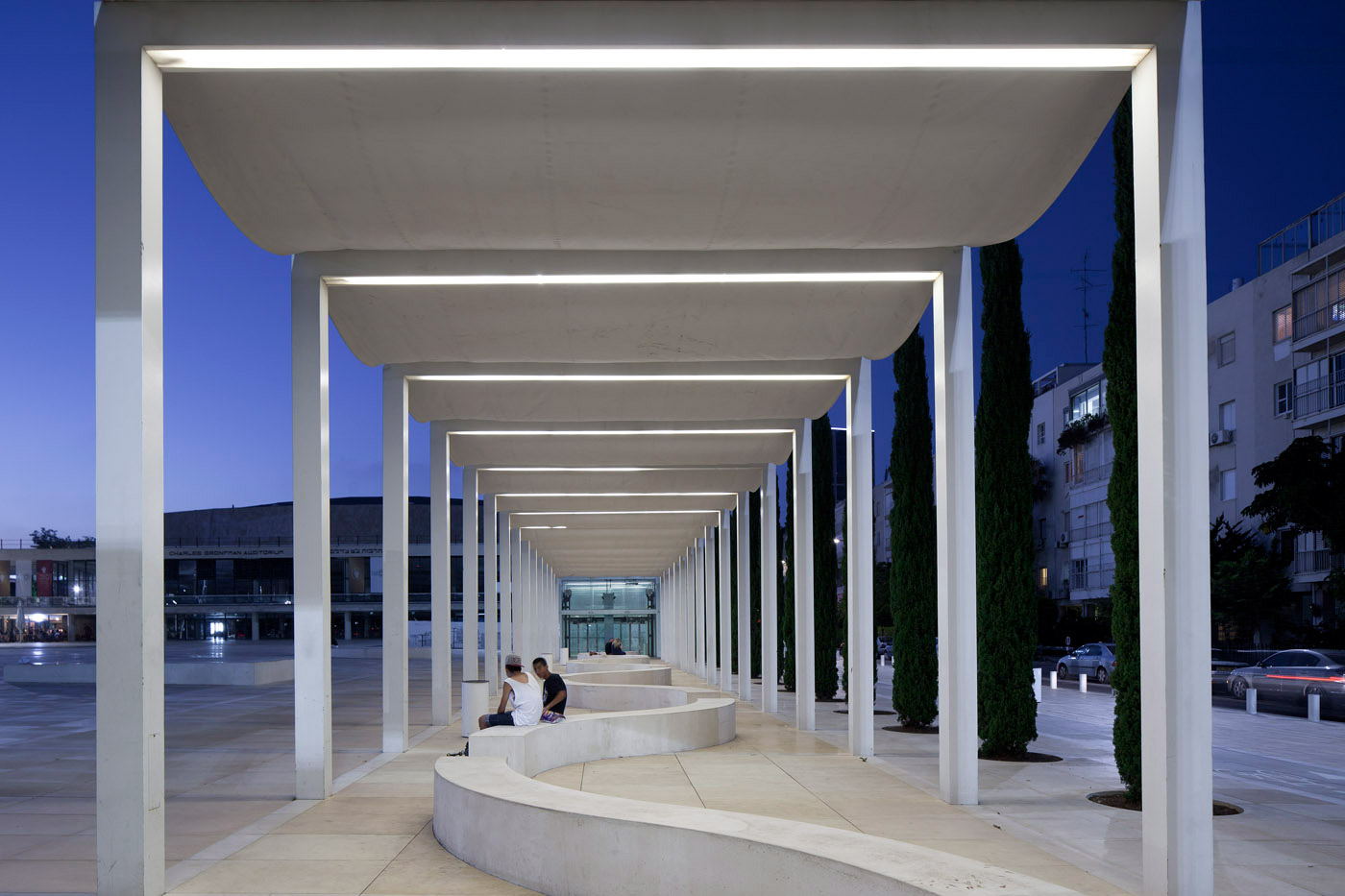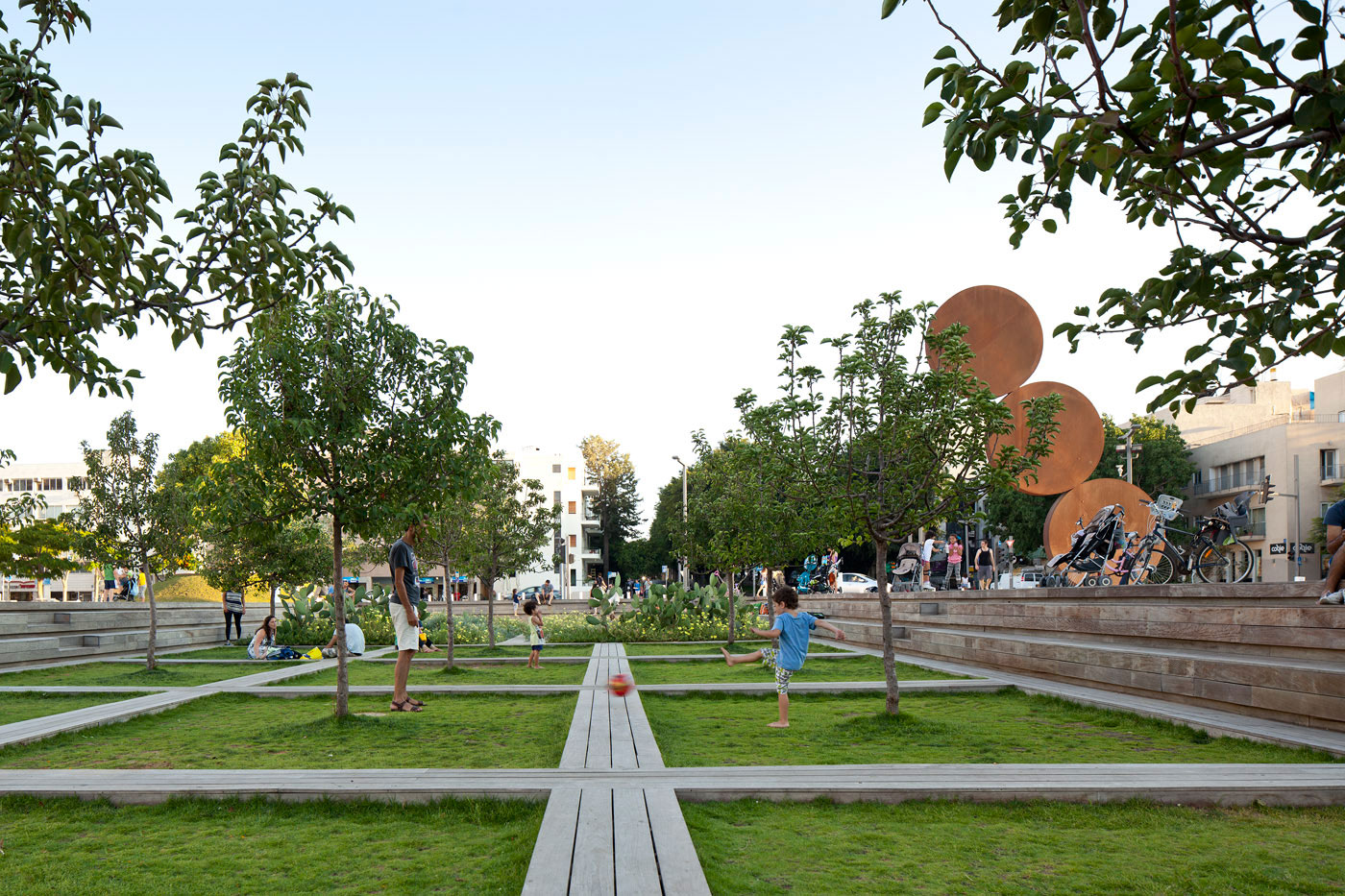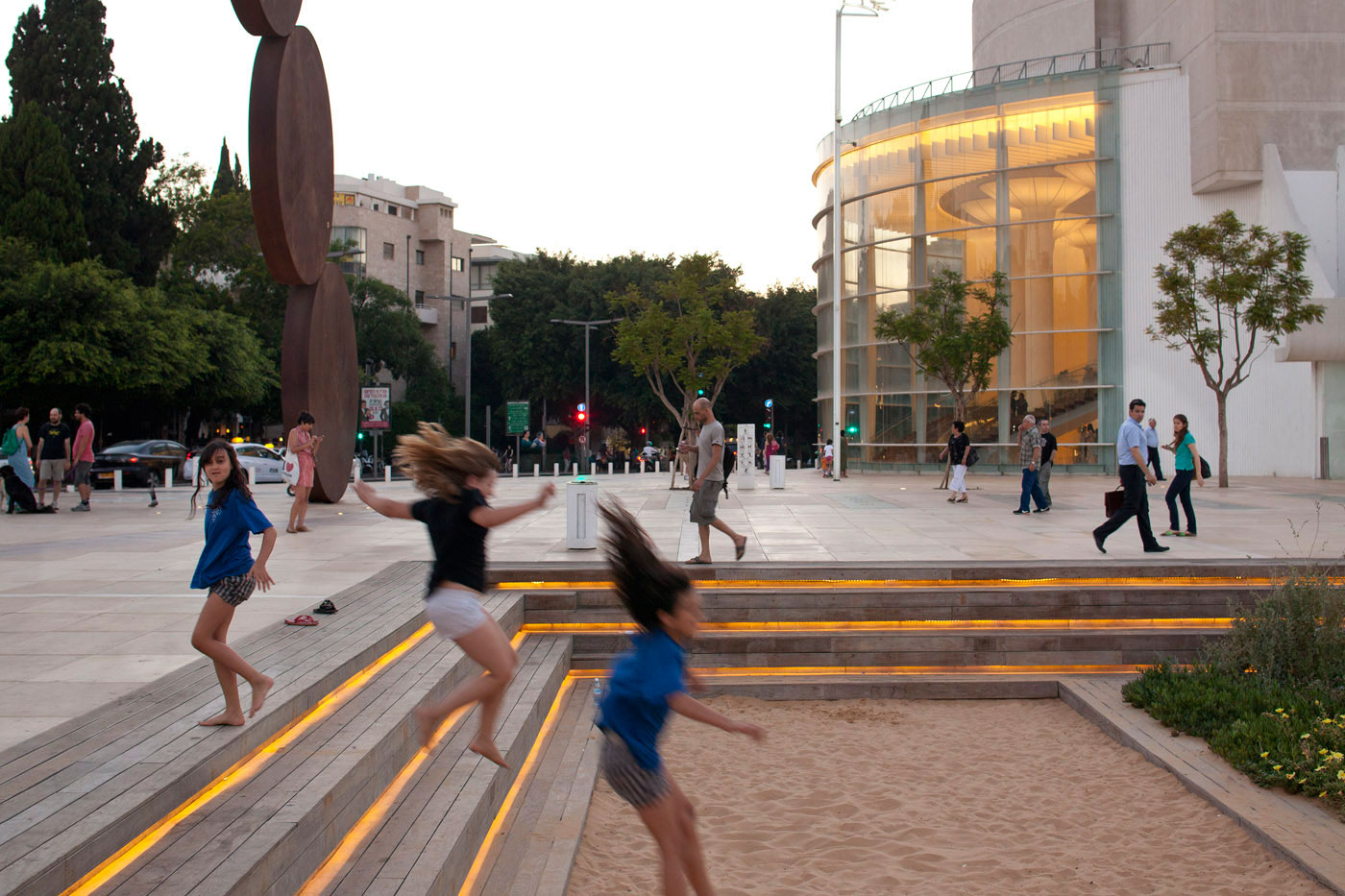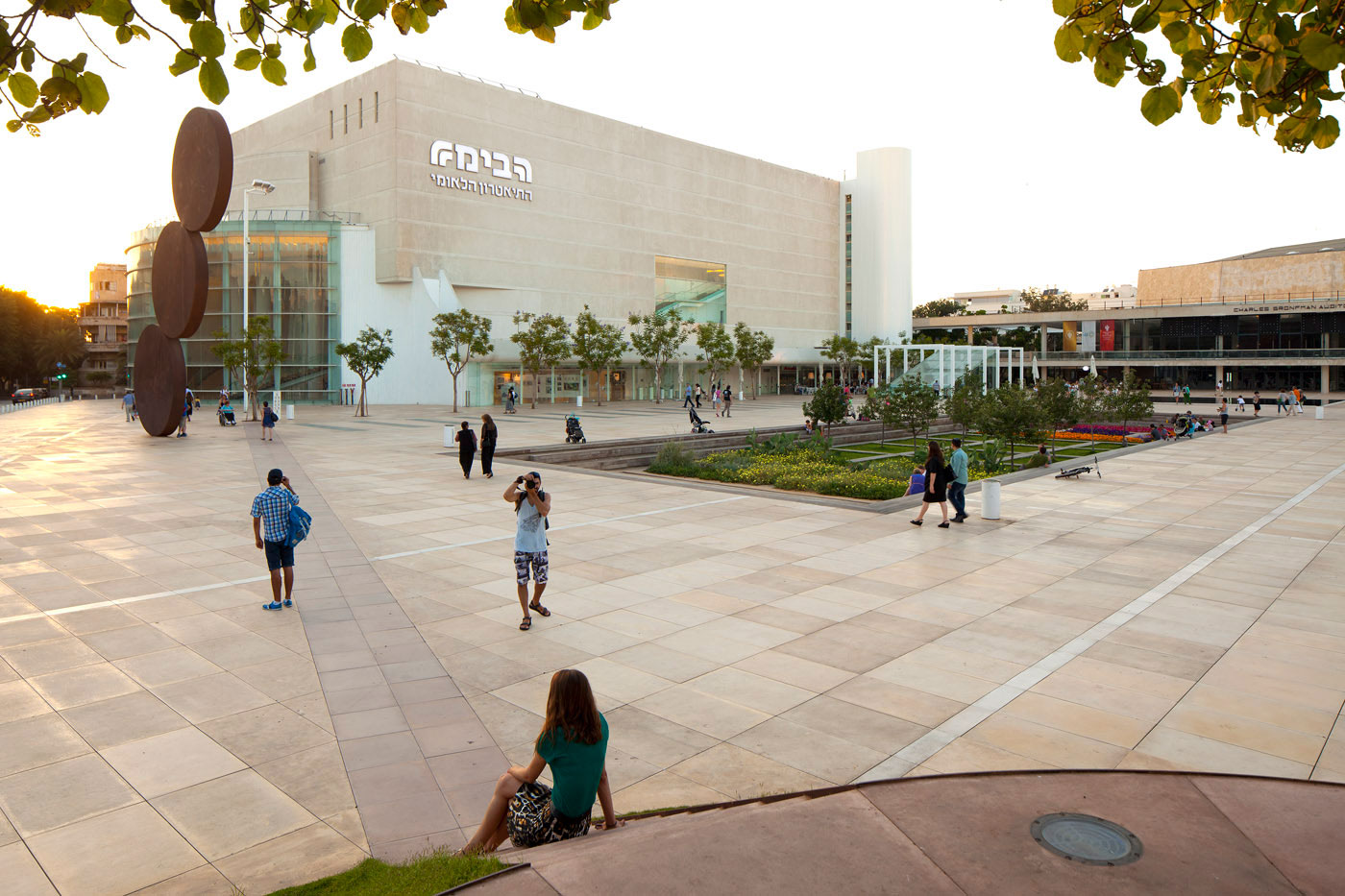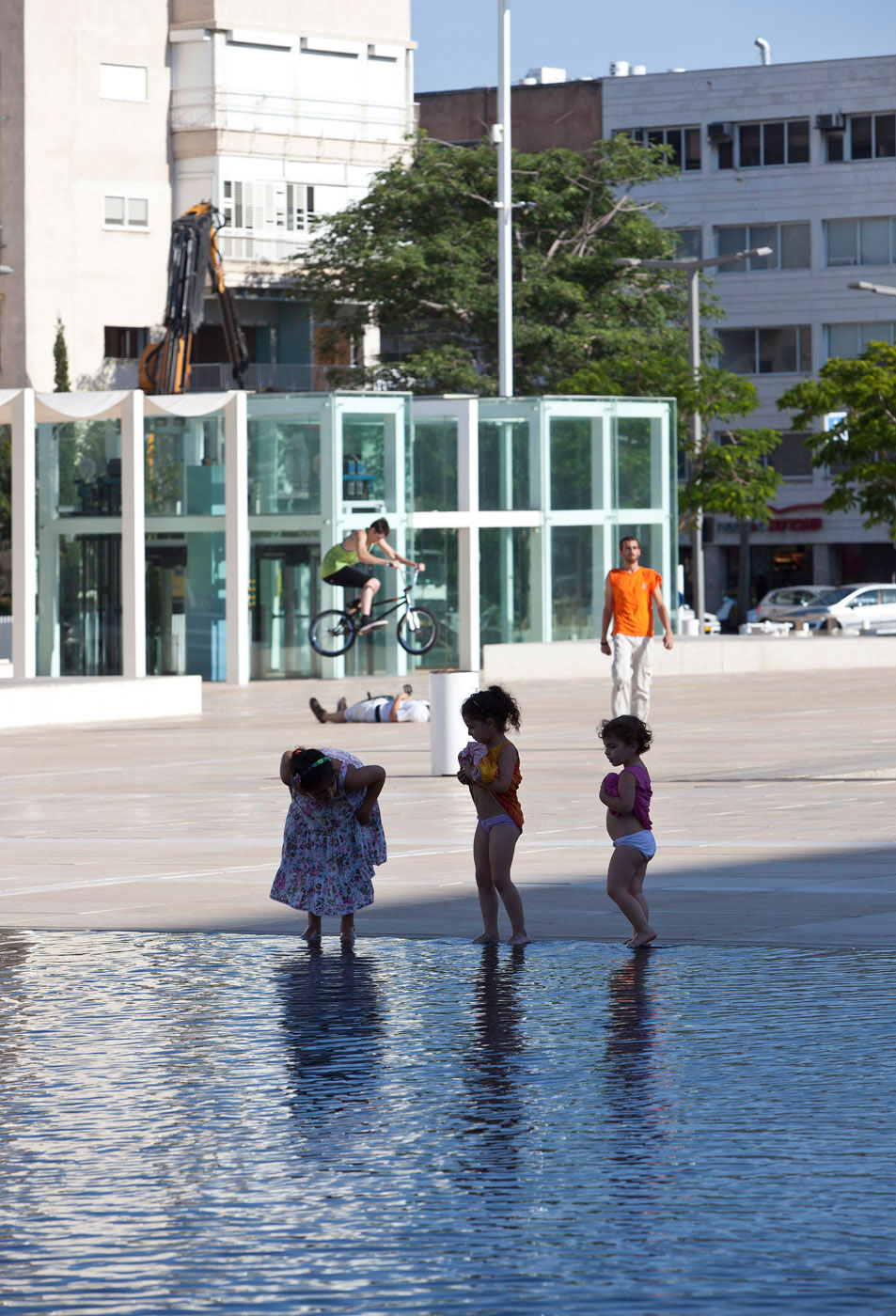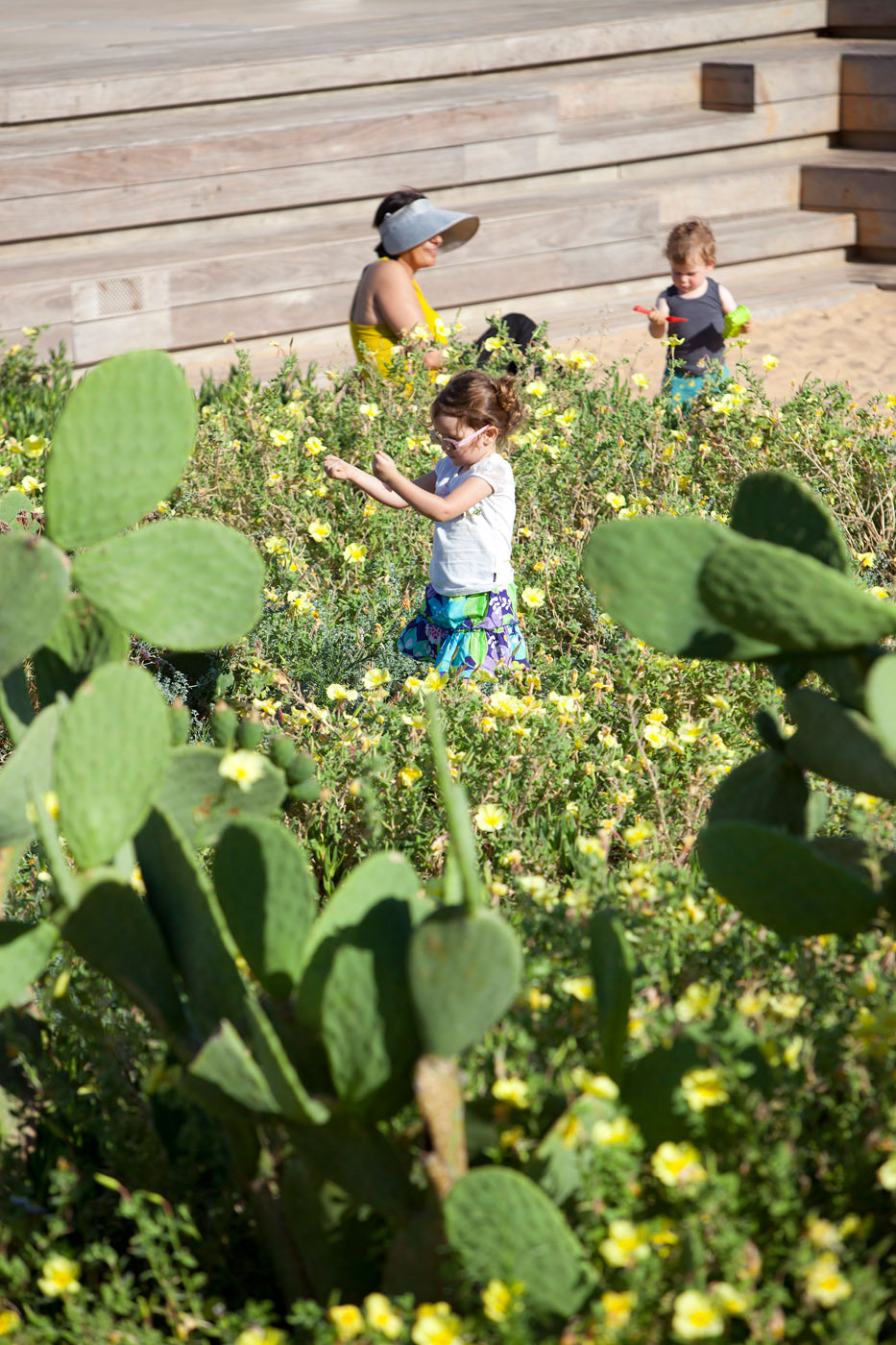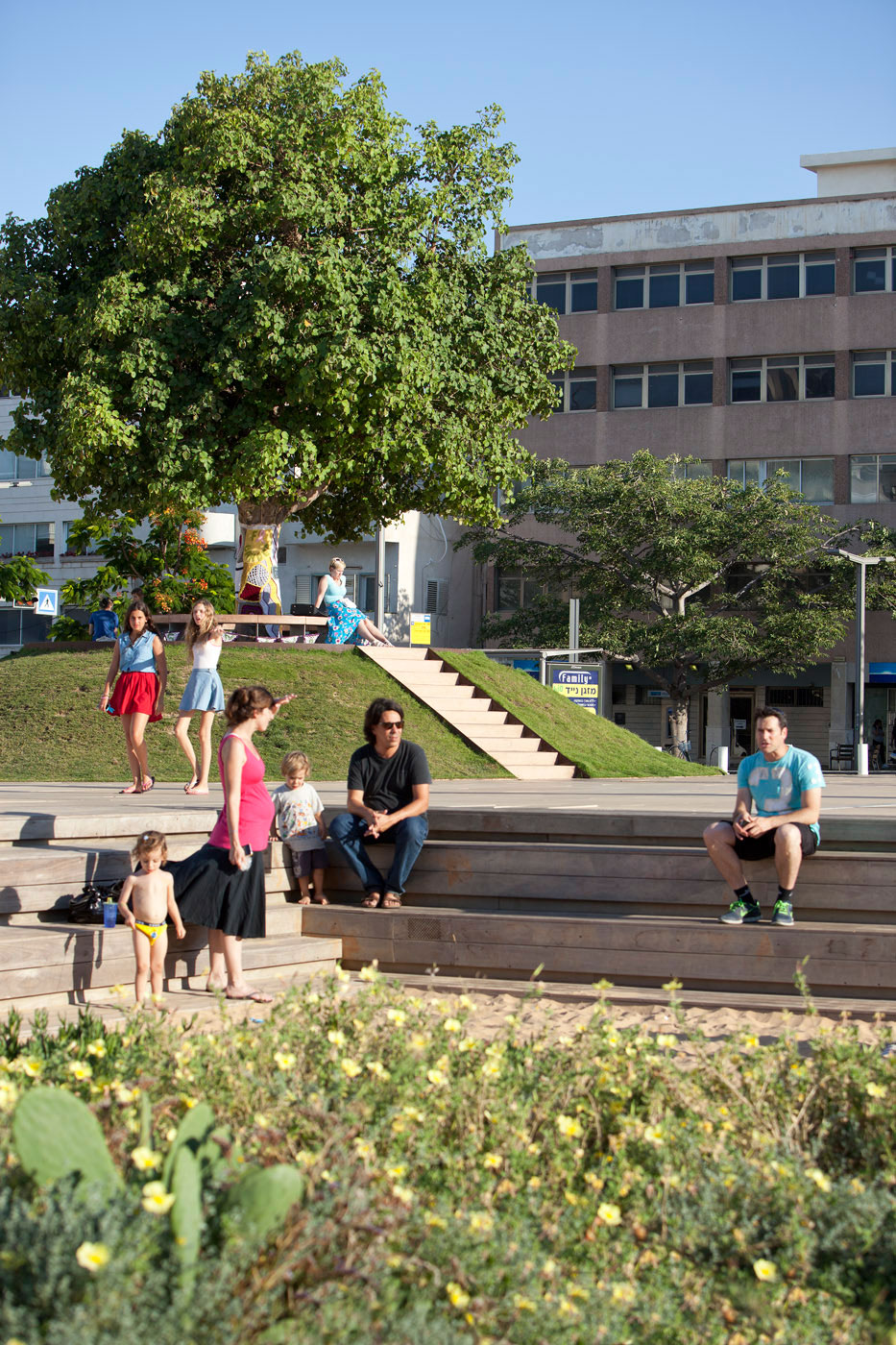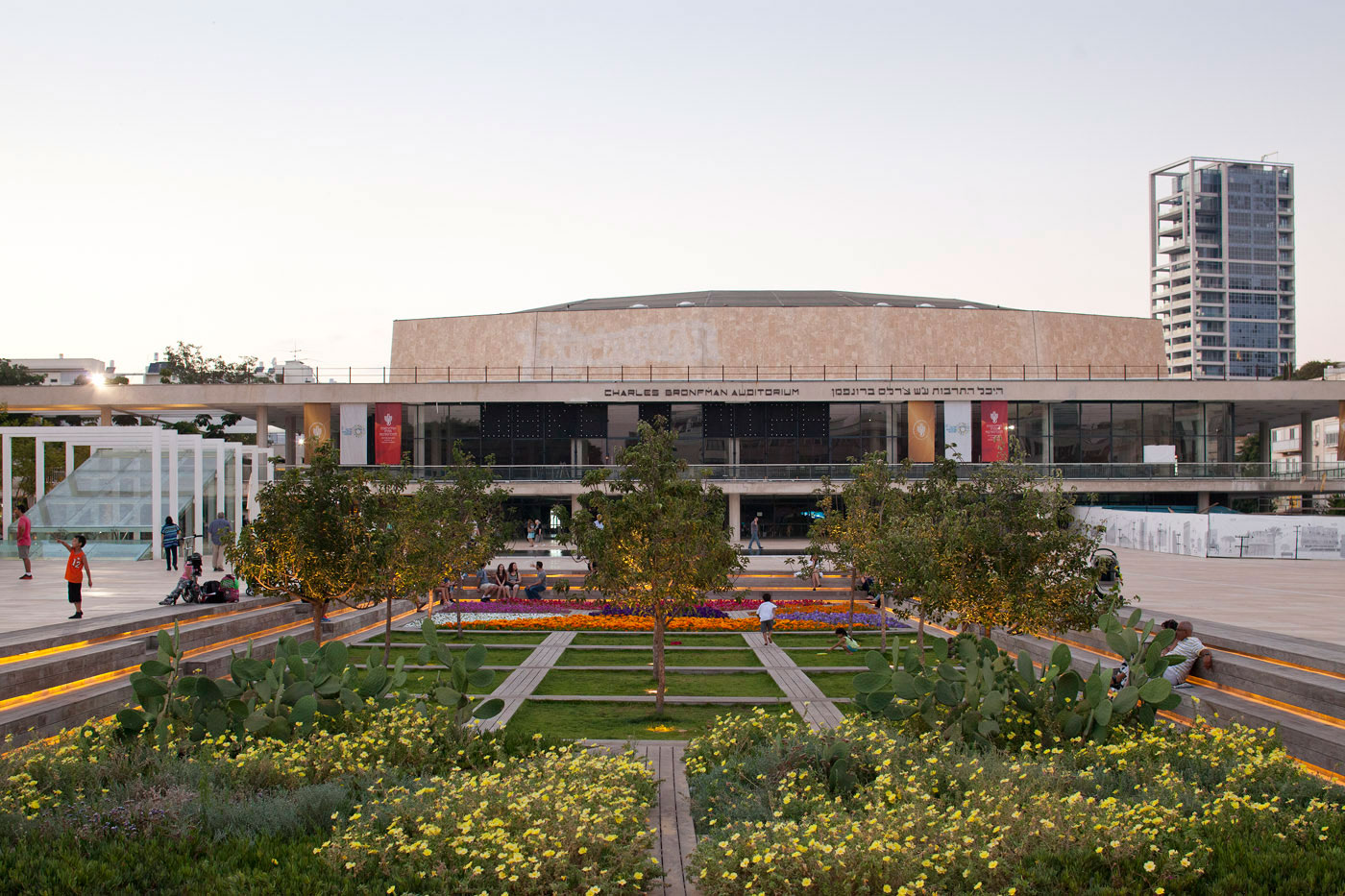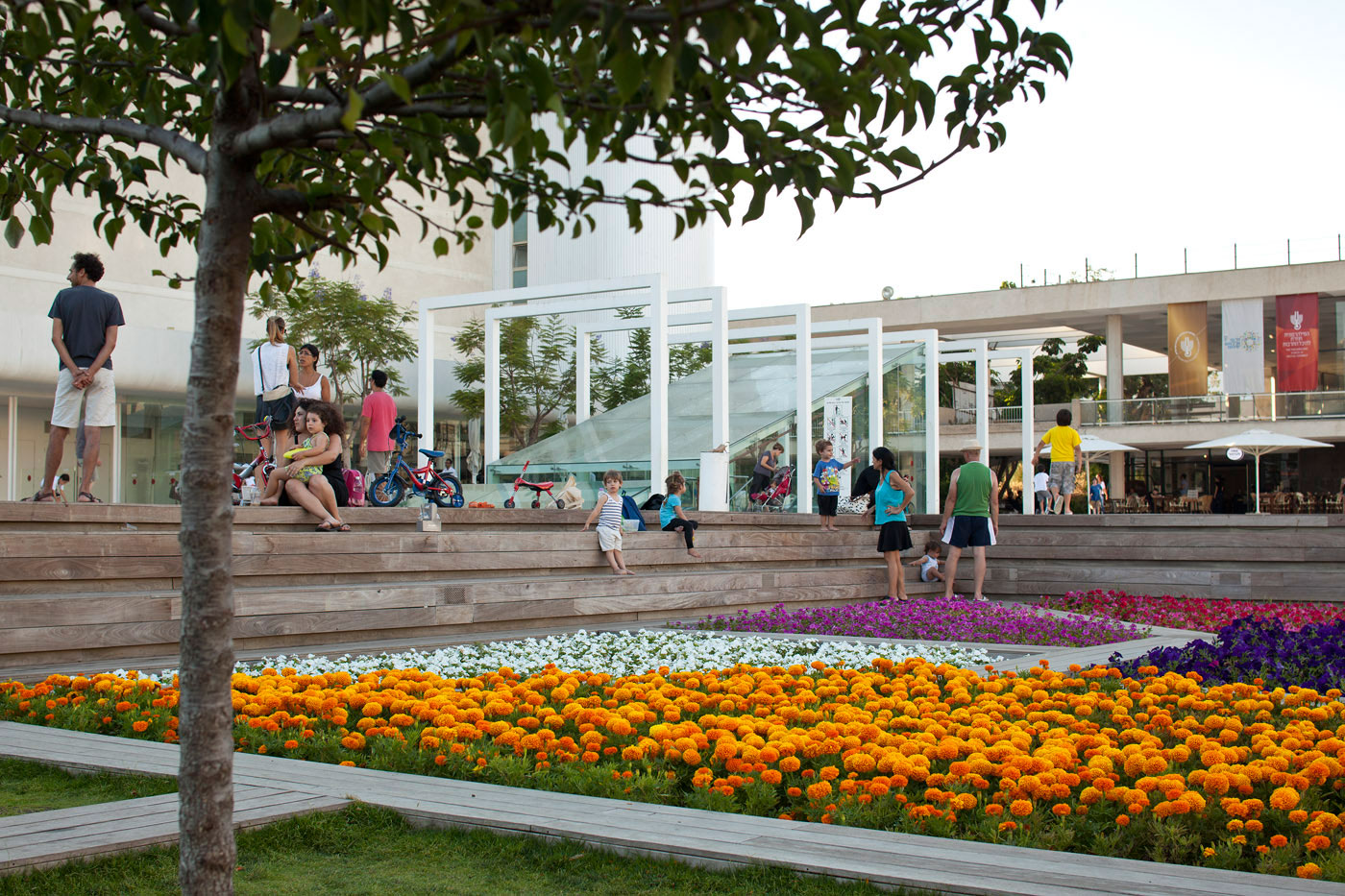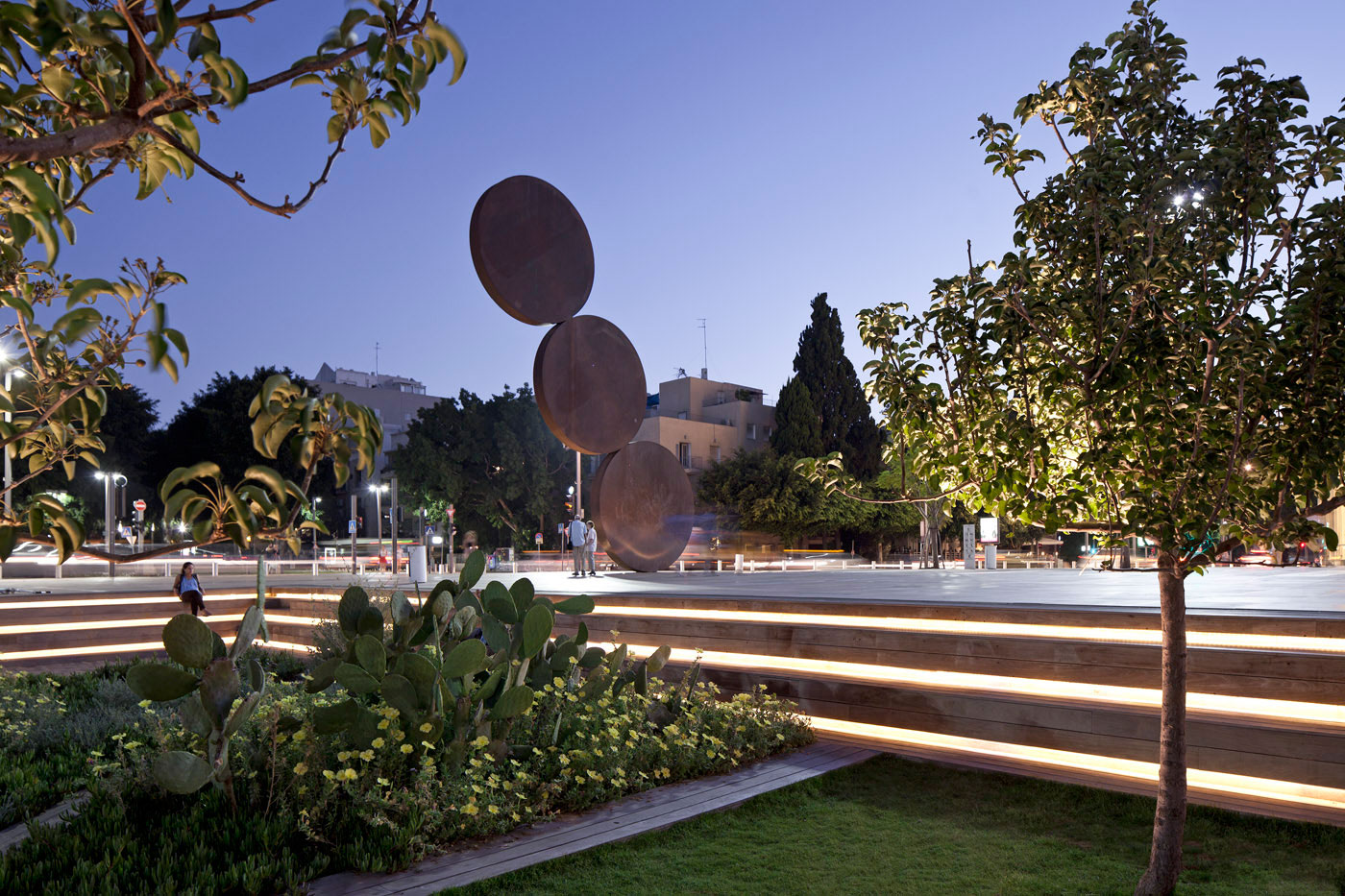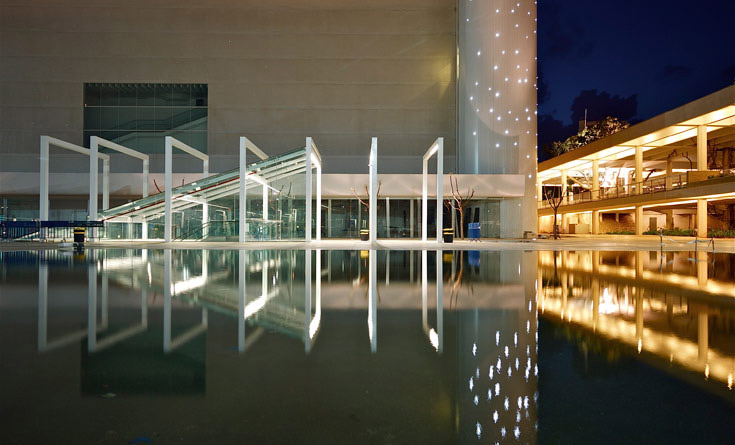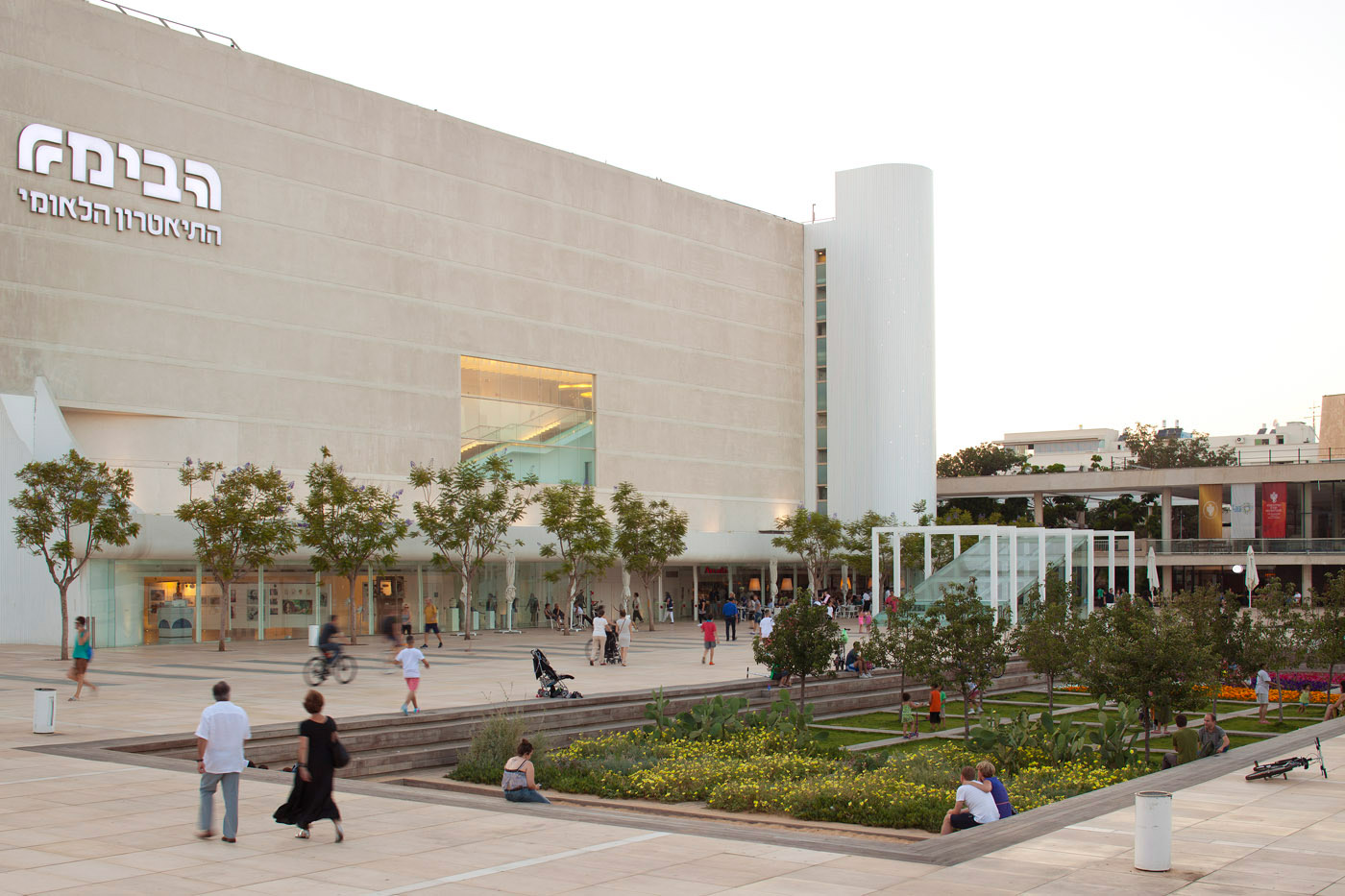
HABIMA
|
Client |
Tel-Aviv Municipality |
|
Location |
Tel-Aviv |
|
Team |
Arc. Lital Szmuk Fabian |
|
Year |
2010 |
|
Domain |
10 Acres |
|
Cost |
18M nis |
|
Collaborations |
Arc. Rami Bar Maor |
|
Photography |
Amit Geron |
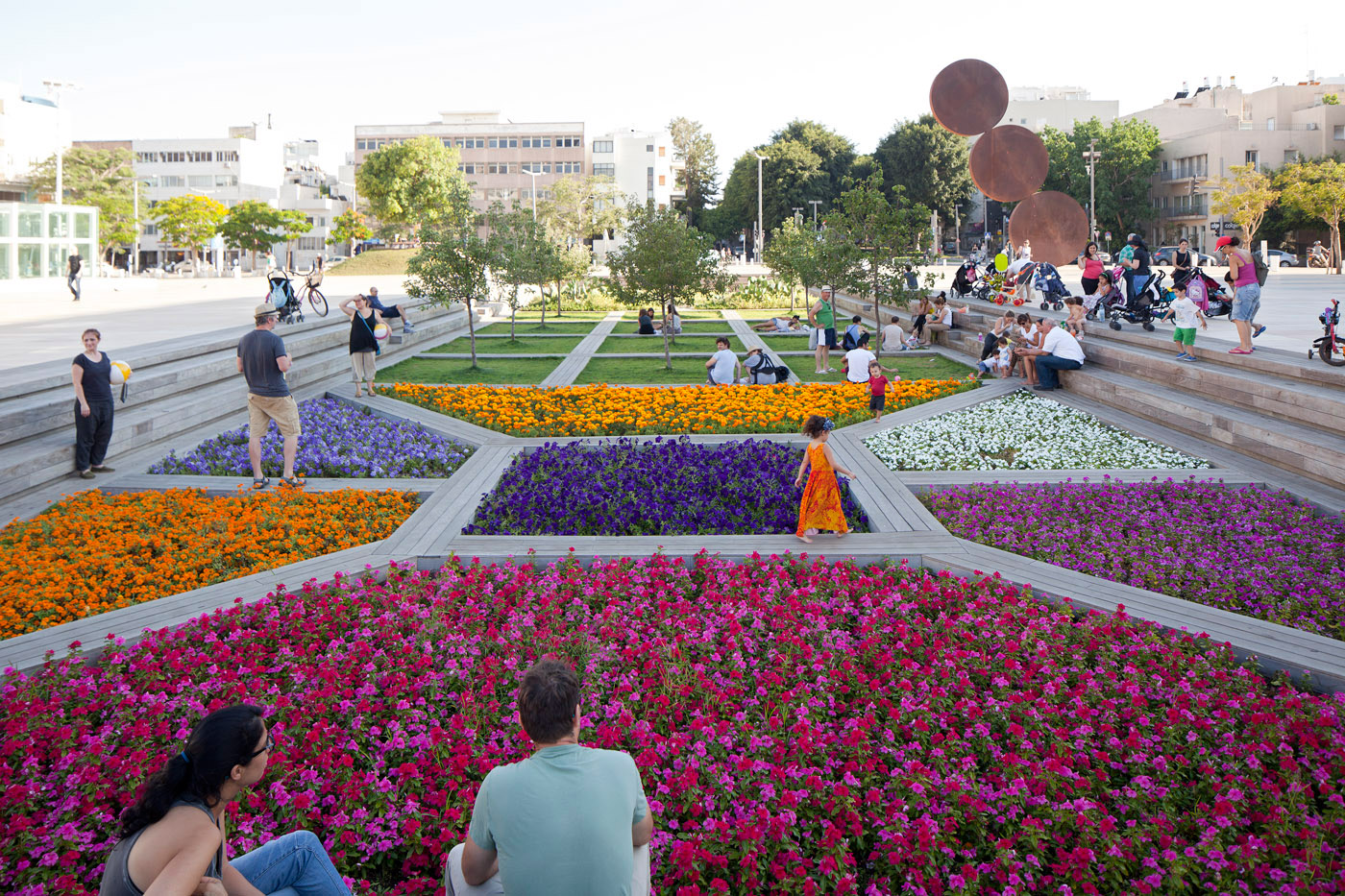
The Habima square was planned together with the artist Dani Karavan, the square pays homage to the history of Tel Aviv by incorporating landscape and vegetation endemic to the area before the city’s major developmental thrust. The idea to design the square as an urban sculptural garden was underlined by the impetus of Karavan. Collaboration between the planners summoned a unique encounter between arts from different fields into the public space.
A large sycamore tree was planted on a hill, to enable sitting down next to the tree trunk and look out over the square from above. The hill was constructed by combining corten steel, the material from which the artist Menashe Kadishman's sculpture "Uprise" is made from, The dialogue between the various elements in the square connects sculpture to the landscape and the square to the city around it. The sycamore tree holds within it a deep cultural value, since the days of the song "Sycamore Garden" by Itshak Itshaki from 1954. the sycamores symbolize the times of old Tel-Aviv, and the public struggle to preserve them along the years. It holds great importance for the urban nature.
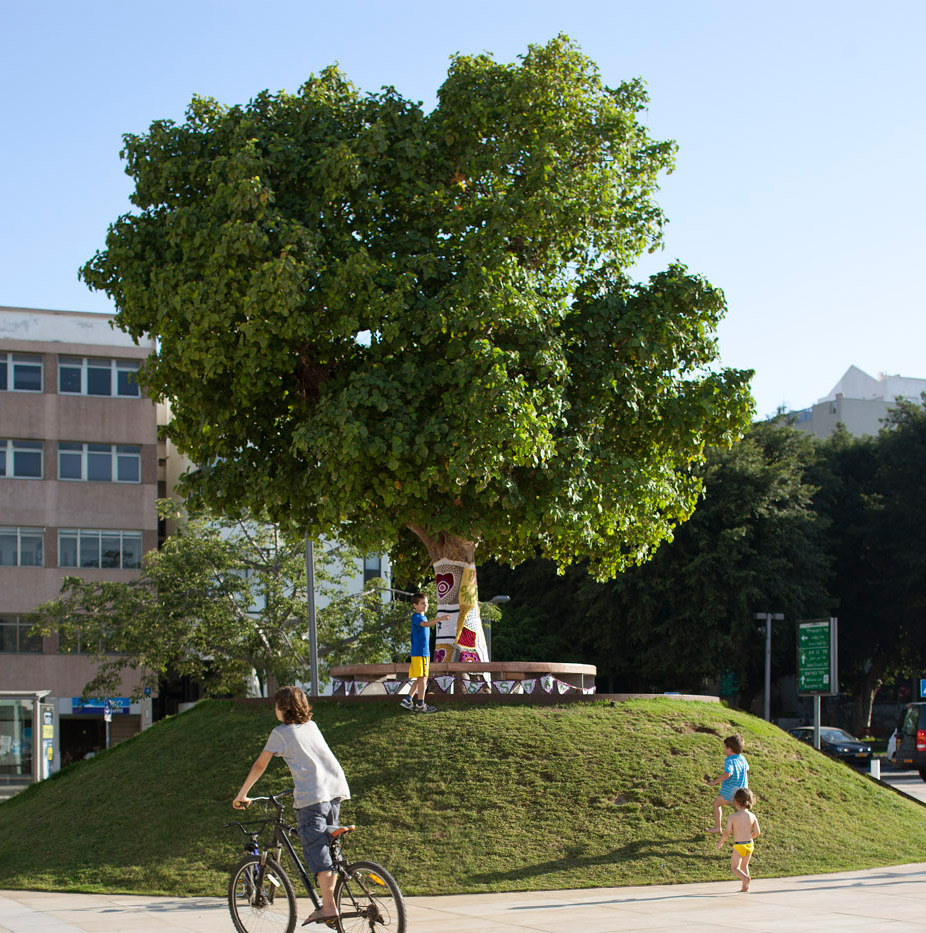
In order to overcome the high rises on the square’s eastern side, a series of gates were erected to connect the entrance and exit lobbies from the garage to the square. A row of cypress trees has been planted between the gates and the garage entrance ramps, both separating the square from the bustle of Huberman Street and commemorating the cypresses that once grew in the area but have since beenuprooted. The flat reflection pool, located about two inches above ground level, gives the impression that we are in a peaceful, most quiet place.
The Square harmonious beauty stems from its design, but its magic lies within the urban landscape connections that coalesce in it. The combination between art and architecture, the surrounding boulevards converging into the square, and the connection between the different levels of the Habima, the car park, and the boulevards.
